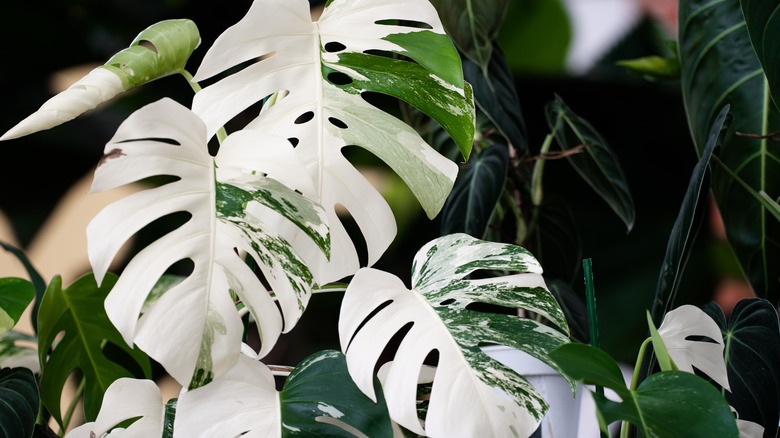Can I Increase Variegation In My Monstera Plant?
If you have a prized variegated Monstera, one of your likely concerns is keeping it that way and perhaps even increasing its variegation. After all, we've all heard about the nightmare of buying a lovely variegated Monstera and then seeing it grow mostly or all-green new leaves. Variegation in plants is a captivating phenomenon where leaves exhibit patches or streaks of different colors, often white or pale yellow, alongside the traditional green. While natural variegation is a result of genetic mutation, there are ways you can encourage and enhance this stunning feature in your Monstera plant, whether it's a Monstera deliciosa, Monstera borsigiana, Monstera adansonii, Monstera acuminata aurea or some other variety.
First, consider how much light your beloved plant is getting. Adequate lighting is crucial not only for its growth but also for promoting those desirable white or pale-yellow streaks. Provide your plant with bright, indirect light. Placing it in direct sunlight for prolonged periods can hinder variegation and lead to leaf burn.
Aside from proper light management, balanced feeding is also crucial. Variegated plants often have slower growth rates due to their reduced chlorophyll production (i.e., less green coloring means less chlorophyll and less food for the plant). To compensate, offer your Monstera a balanced and diluted liquid or granulated fertilizer (NPK 20-20-20, 10-10-10 or 5-5-5) once a month from spring to fall. Besides light management and proper nourishment, there are other methods you can try to encourage variegation in your Monstera.
Pruning and plant propagation help
Pruning can play a significant role in promoting variegation. If you notice a section of your Monstera's foliage that is entirely green, consider removing those leaves. Doing so will encourage the plant to invest energy in producing variegated leaves rather than in making chlorophyll. Another pruning method referred to as "pinching" entails removing new growth at the base of the plant before it has a chance to produce chlorophyll. By consistently doing this, you can gradually decrease the plant's chlorophyll production, ultimately enhancing the variegation patterns in its leaves.
If your Monstera has particularly appealing variegation, consider propagating the plant. To do this, select a healthy stem that already exhibits variegation, preferably one with a single node or more. Cut just below the node and plant it in well-draining soil or distilled water. Keep it partially shaded or place it somewhere with dappled sunlight, and in a few weeks, you'll see roots forming. Once the roots are established, transplant it into a pot and watch it grow!
Enhancing variegation in your Monstera plant is a journey that requires a balance of care and understanding. By providing the right environment, nutrition, and thoughtful pruning, you can encourage your Monstera to display its gorgeous patterns. Remember, each plant is different, and while there's no surefire way to guarantee a specific level of variegation, the joy lies in watching nature's artistry unfold — with a bit of nudging from you. Happy planting!
